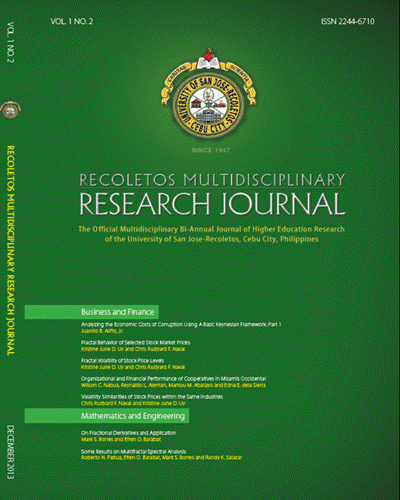Research and Innovation Expenditure: A Key to Global Competitiveness, a Fractal Validation
DOI:
https://doi.org/10.32871/rmrj1301.02.15Keywords:
research expenditure, productivity, global competitiveness, fractal correlational analysisAbstract
Despite the clear impact of innovation through research on the national economy, expenditures (percentage from GDP allotted to each quality researcher) for supporting scientific investigations are observed to be highly erratic. This study analyzes the impact of this erratic and irregular pattern of expenditures to research on one’s country’s productivity and global competitiveness. It is shown that the high fractal dimension in expenditures smoothens the irregularity of both productivity and global competitiveness such that the governments’ large amount of investment from GDP to research and development investments together with the alliance of the private units and high quality scientific research institutions collectively contribute to maximizing the economy’s potentials to be productive and be globally competitive.
References
Artadi, E. and Xavier, Sala-i Martin, “The Global Competitiveness Indexâ€, Global Competitiveness Report, Global Economic Forum 2004
Bew, R. (2013). “Hot Spots 2025: Benchmarking the future competitiveness of cities.†A report from the Economist Intelligence Unit 2013.
Chui, M. The Social Economy: Unlocking the Value and Productivity through social Technologies, McKinsey Global Institute, 2012
Hall, B. H., A. Jaffe, et al. (2005). “Market Value and Patent Citations.†RAND Journal of Economics 36(1): 16-38.
Hall, B. H., Jaffe, A. B., Trajtenberg, M. (2000). Market Value and Patent Citations: A First Look, National Bureau of Economic Research Cambridge, Mass., USA.
Harhoff, D., F. Narin, et al. (1999). “Citation Frequency and the Value of Patented Inventions.†Review of Economics and Statistics 81(3): 511-515.
Kaiser, U. “The Strategic Role of Patentsâ€, Economics of Innovation, Chapter 11, 2013.
Leydesdorff, L. (2006). “Patent Classifications as Indicators of Cognitive Structures.†(in preparation).
Padua, Roberto, N. and Palompon, Daisy, R. and Ontoy, Dexter S. (2012) “Data Roughness and Fractal Statistics†(CNU Journal of Higher Education, Vol. 6, No.1, CHED-JAS Category A, pp. 87-101)
Padua, Roberto and Barabat, Efren (2013) “ On the Properties of Multifractal Spectrum†(The Recoletos Journal of Higher Education, Vol. 1, No.1, Research Journal of the University of San Jose Recoletos, CHED-JAS Category B, pp. 78-89).
Reitzig, M. (2004). “The private values of’thickets’ and’fences’: towards an updated picture of the use of patents across industries.†Economics of
Innovation and New Technology 13(5): 457-476.
Schwab, K. “The Global Competitiveness Indexâ€, Global Competitiveness Report, Global Economic Forum 2013-2014.
Trajtenberg, M. (1990). “A Penny for Your Quotes: Patent Citations and the Value of Innovations.†RAND Journal of Economics 21(1): 172-187.
Downloads
Published
How to Cite
Issue
Section
License
Copyright of the Journal belongs to the University of San Jose-Recoletos


